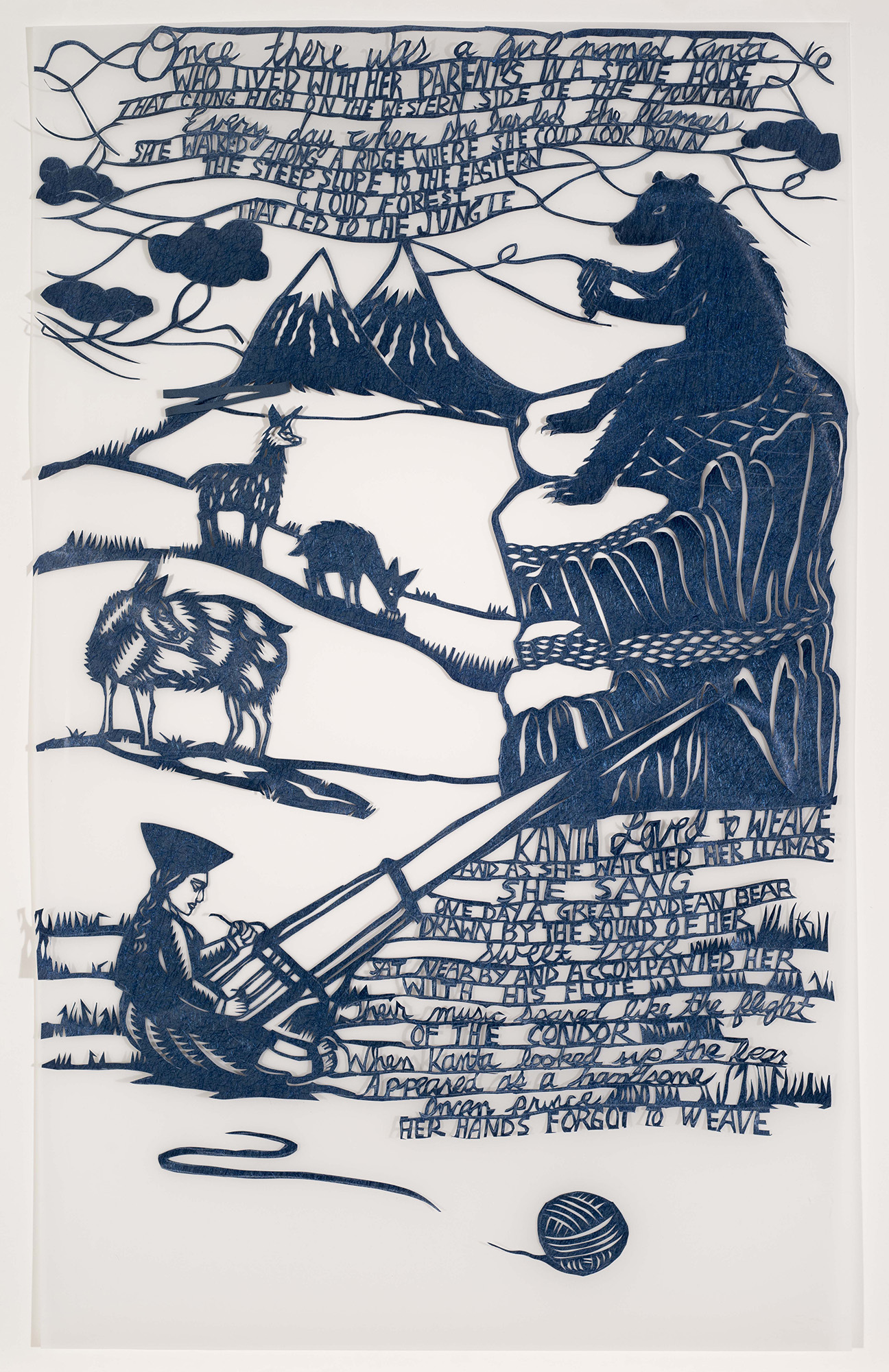
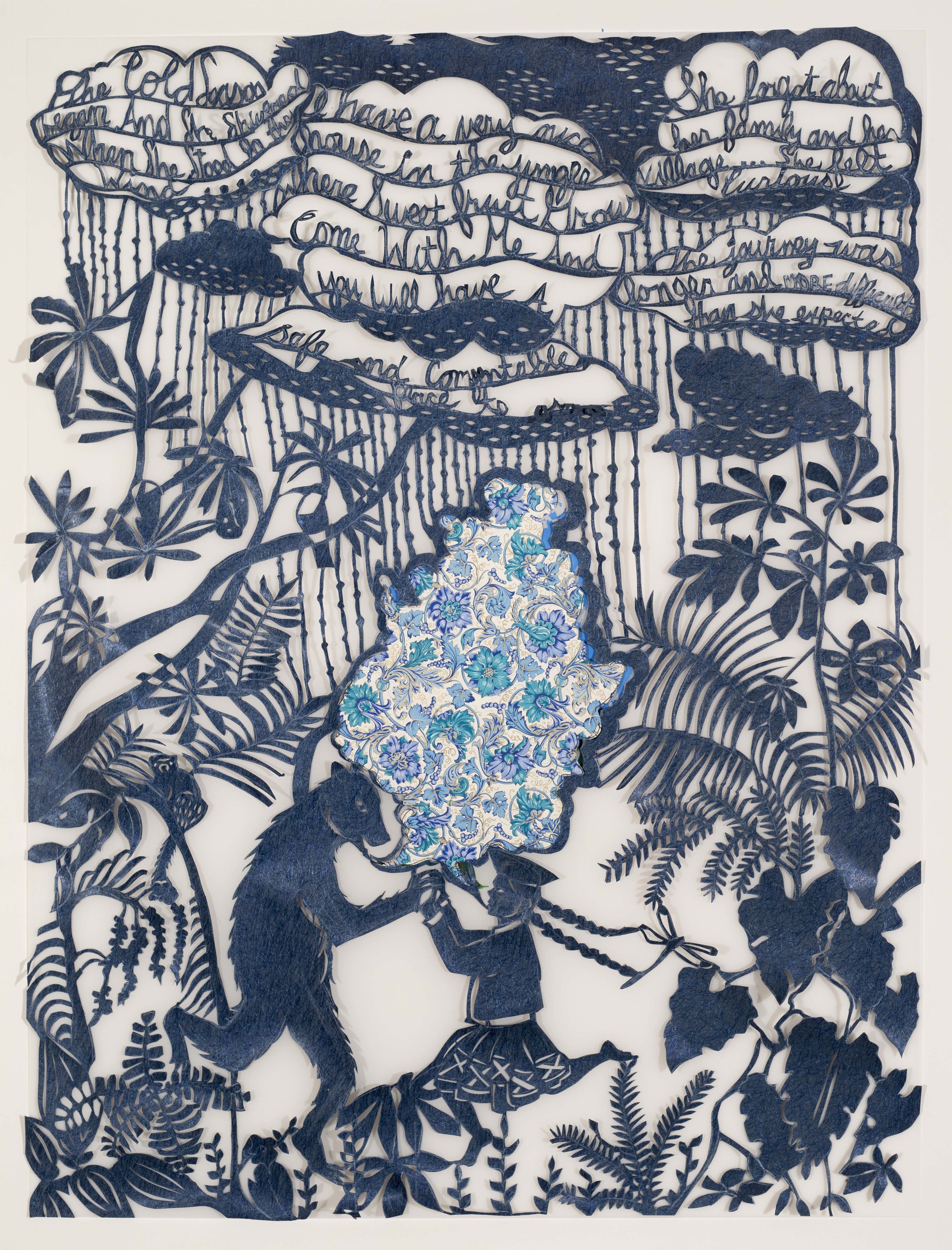

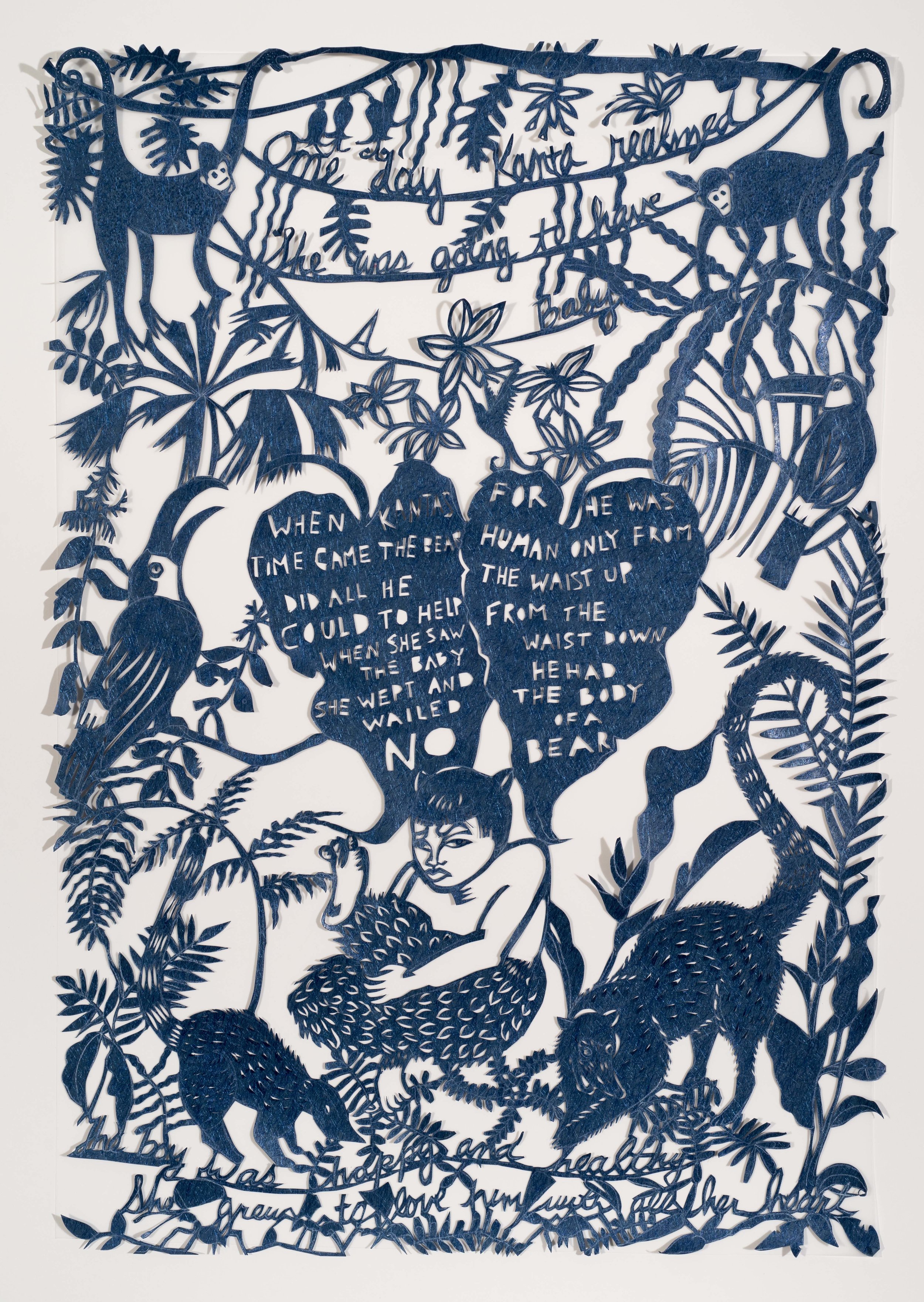
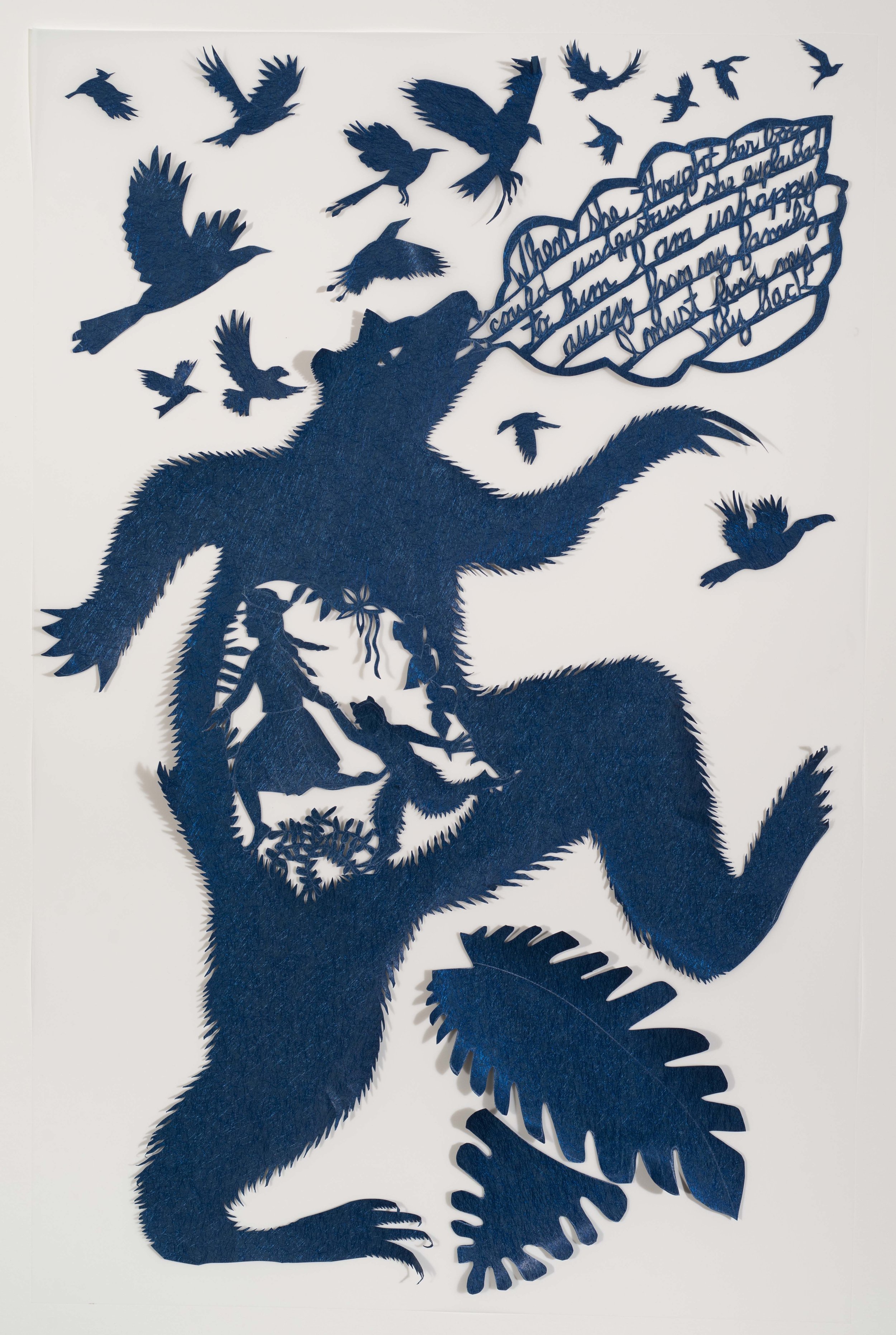
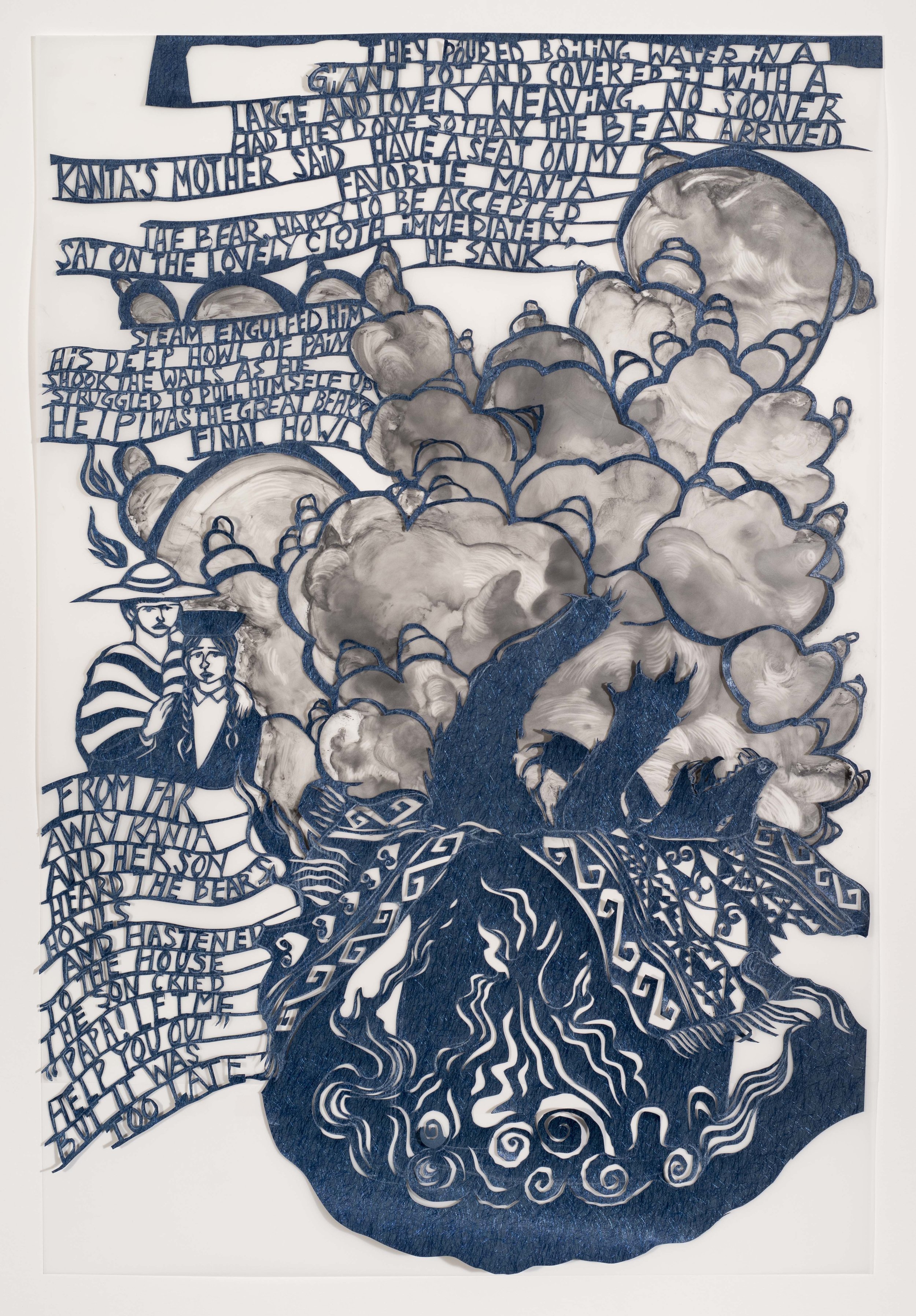
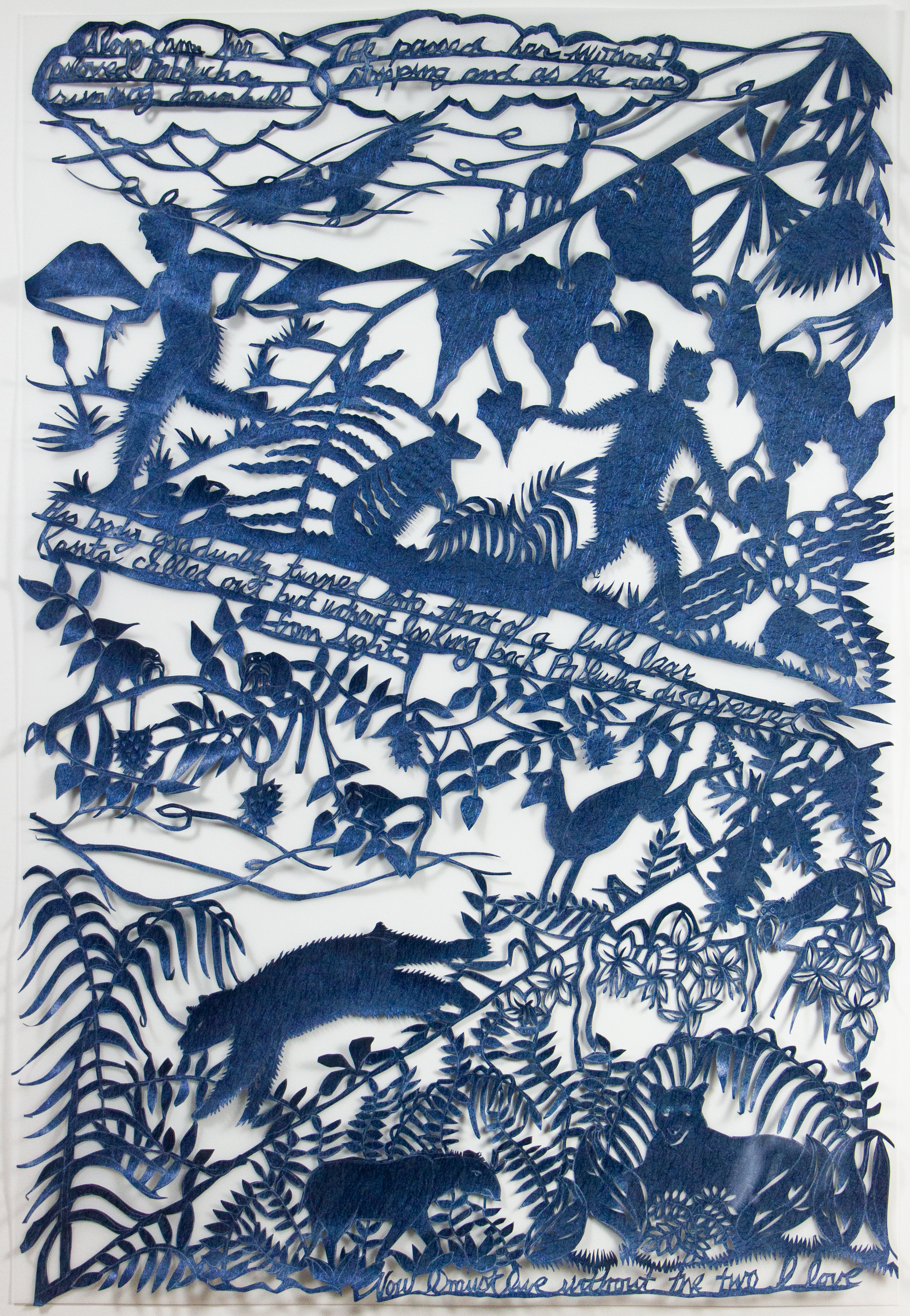
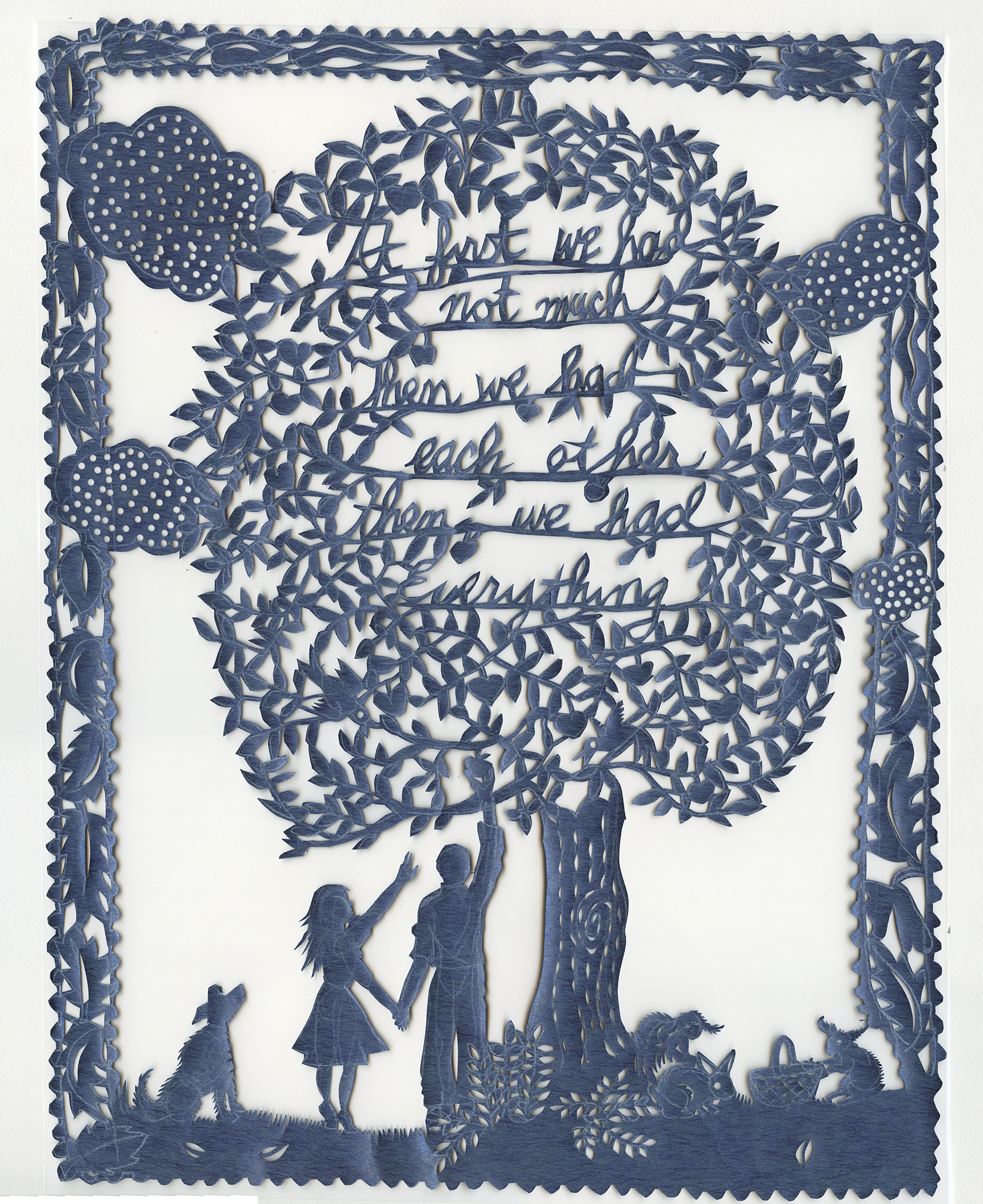

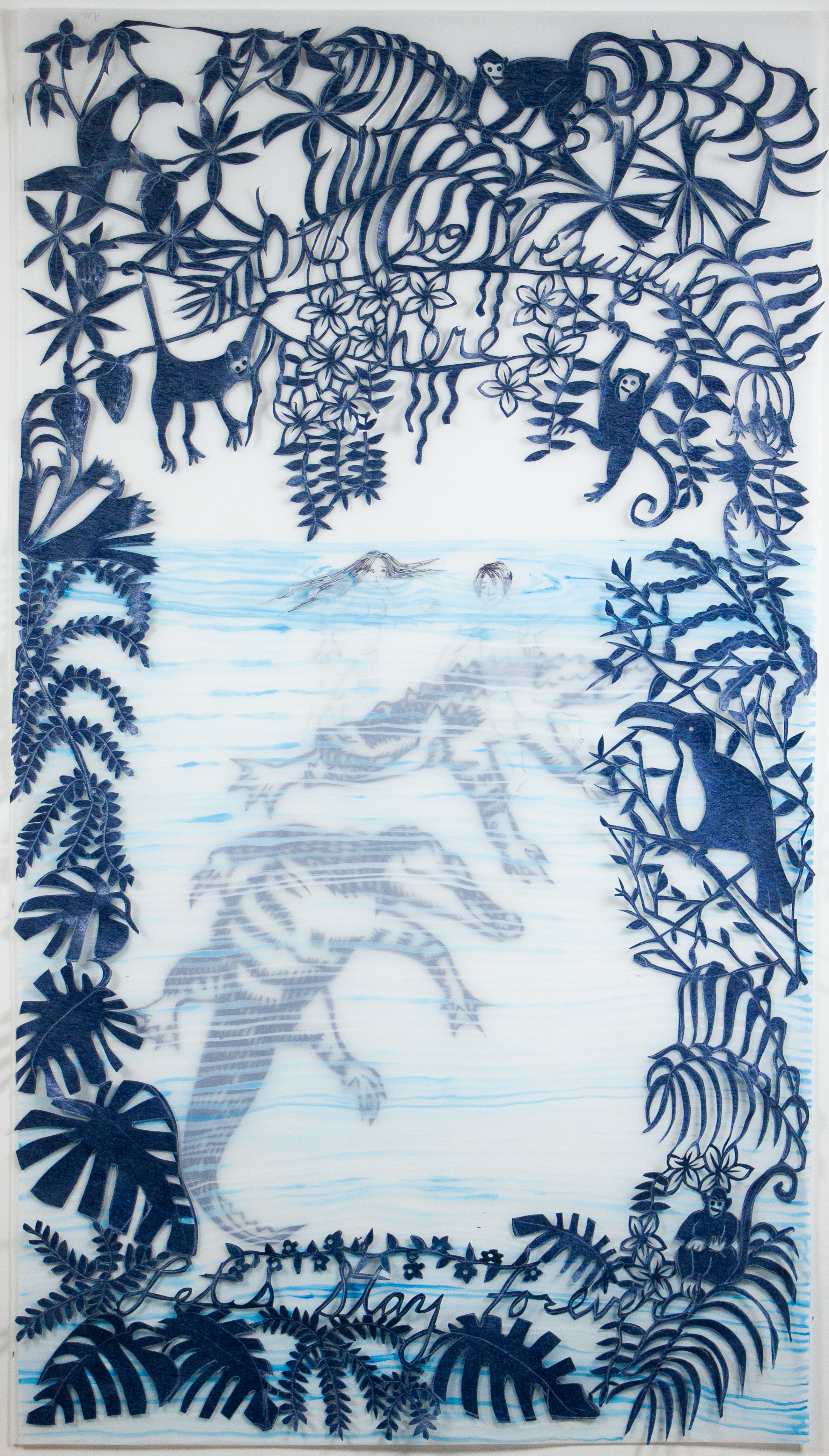
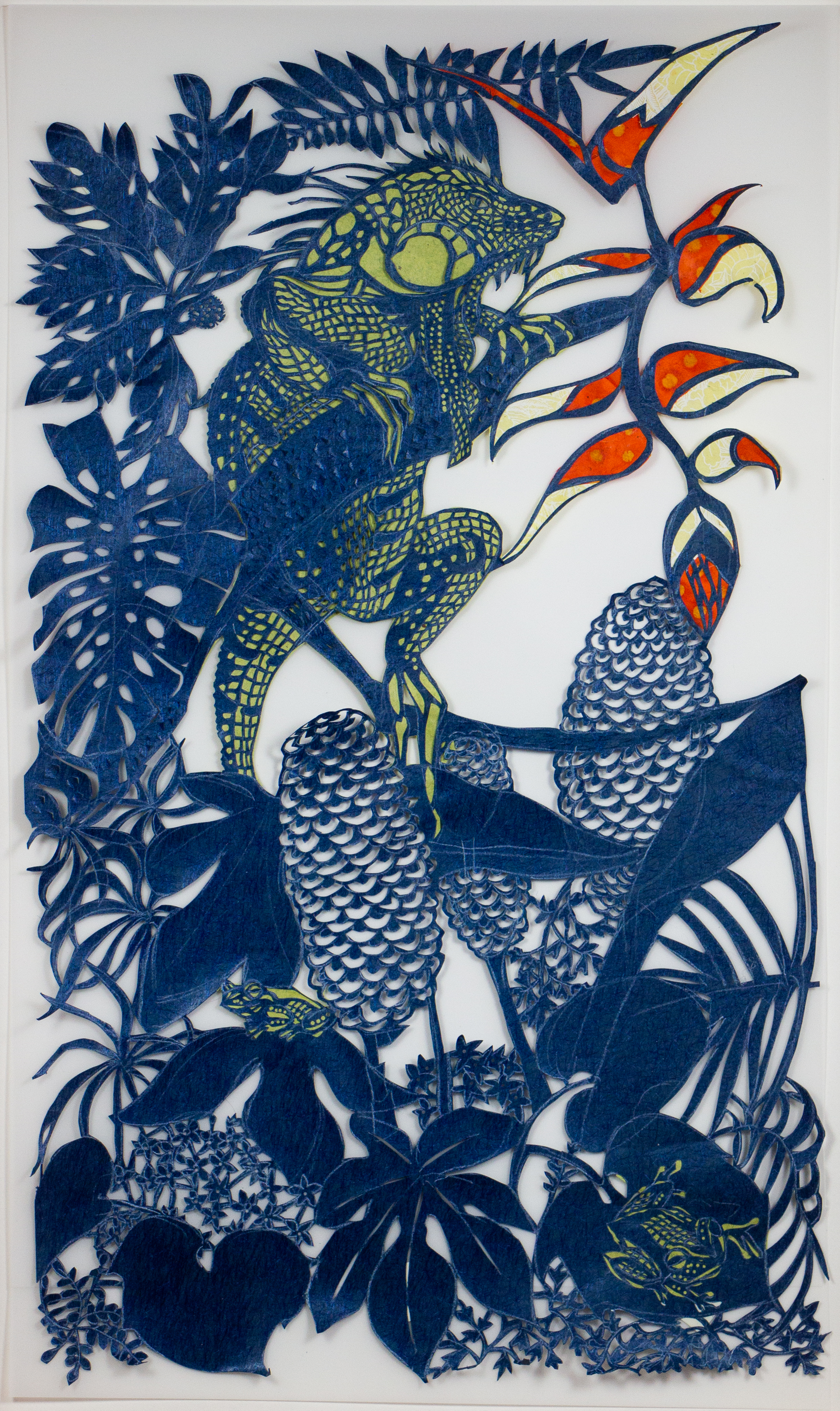
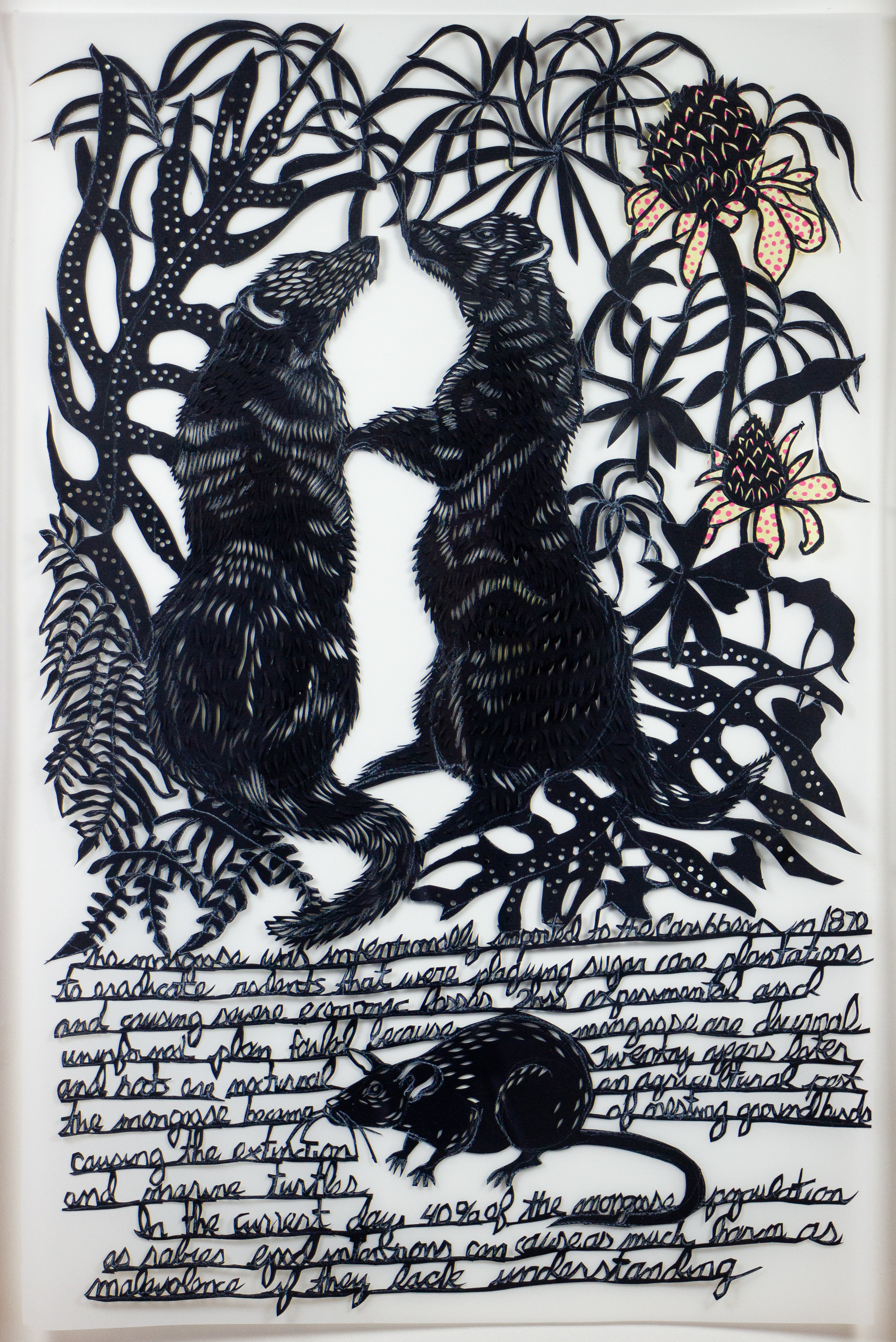
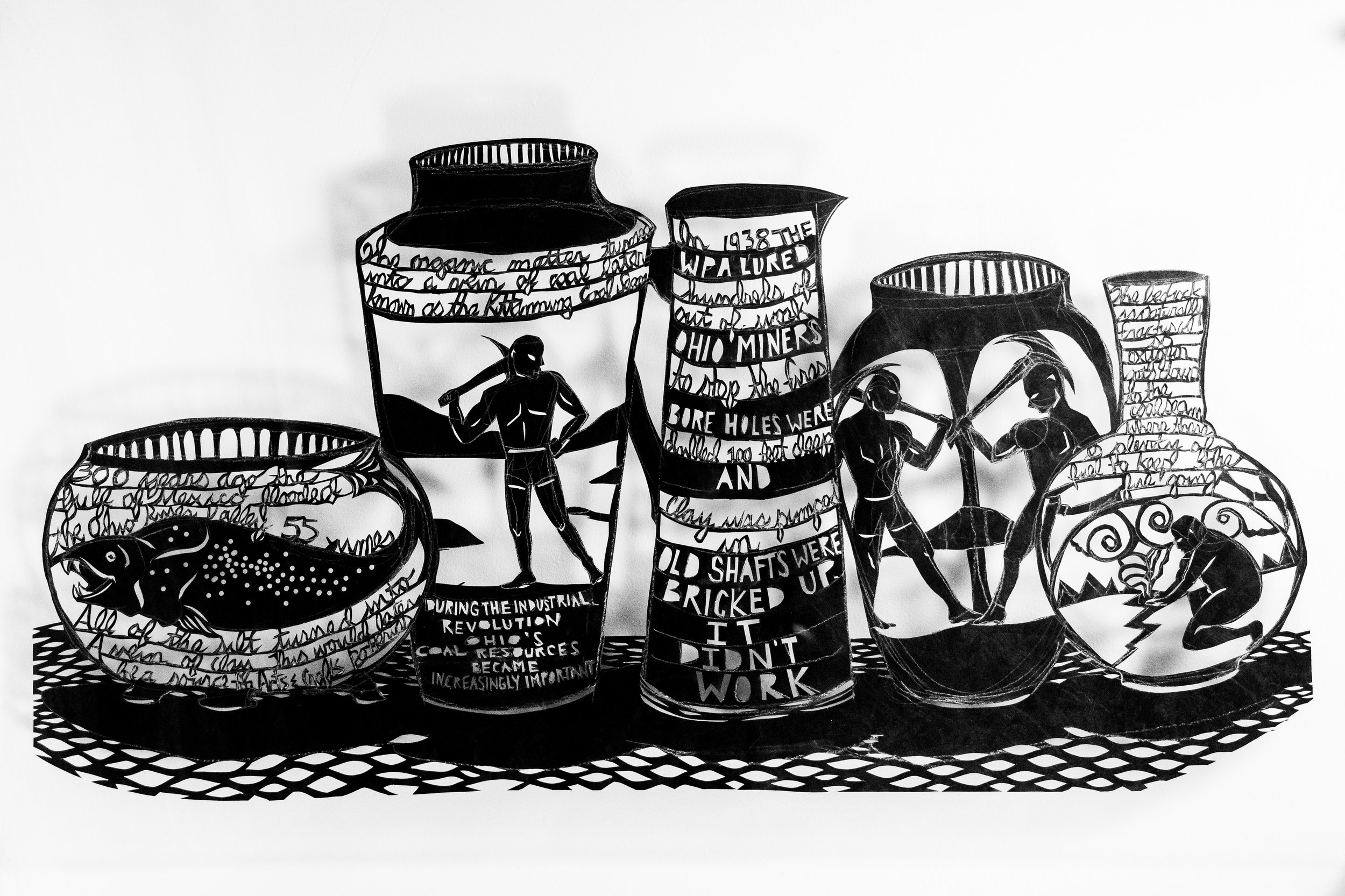
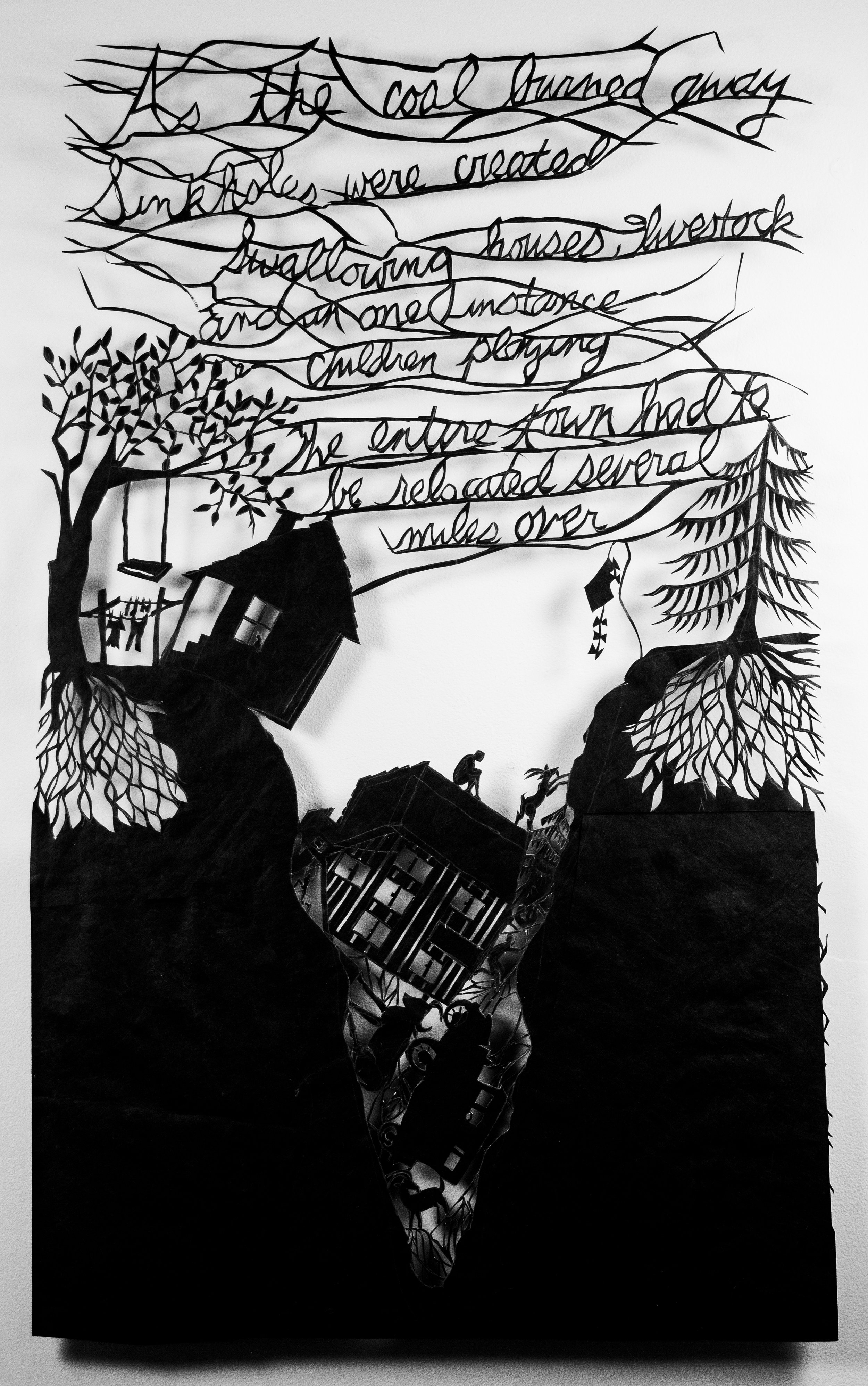
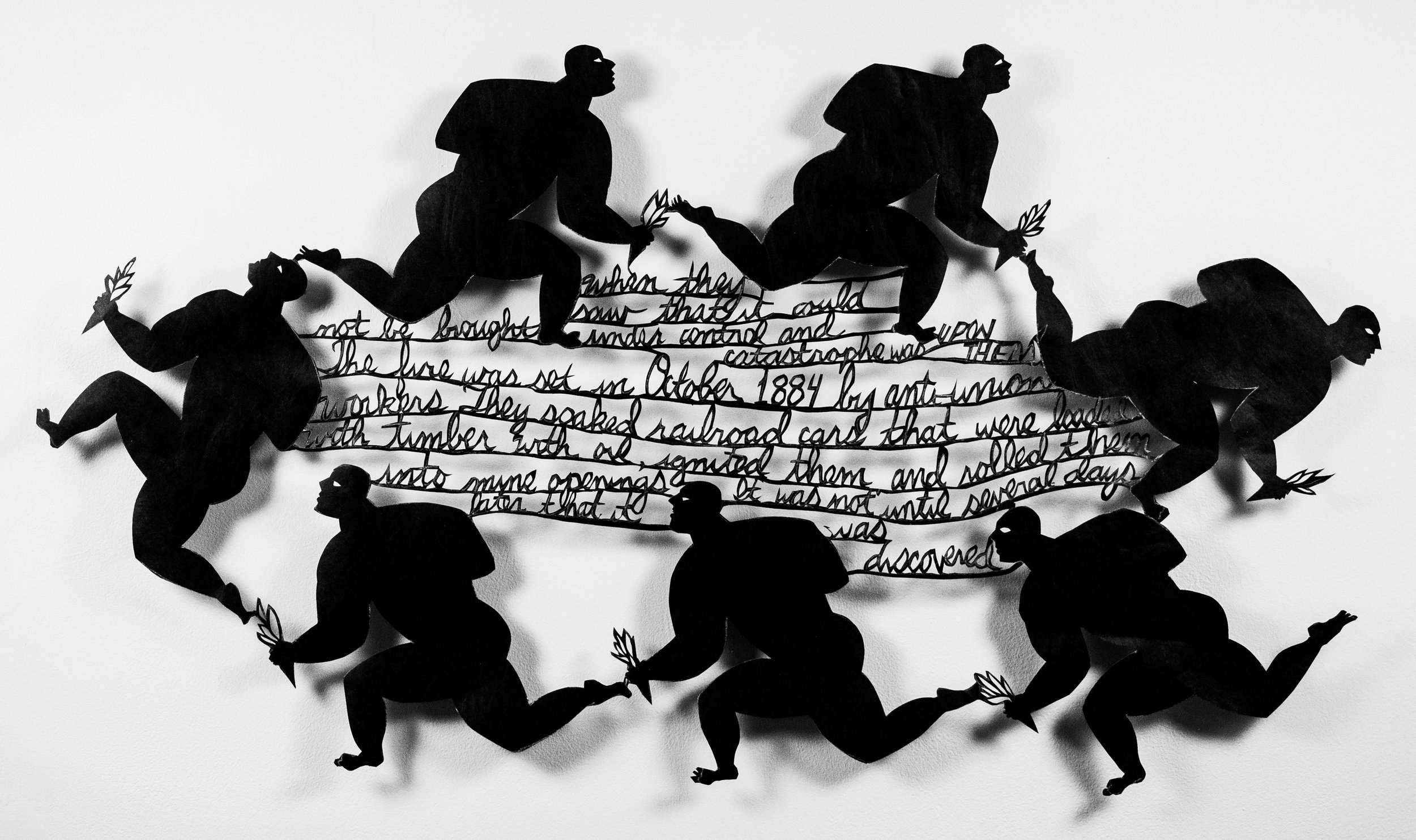
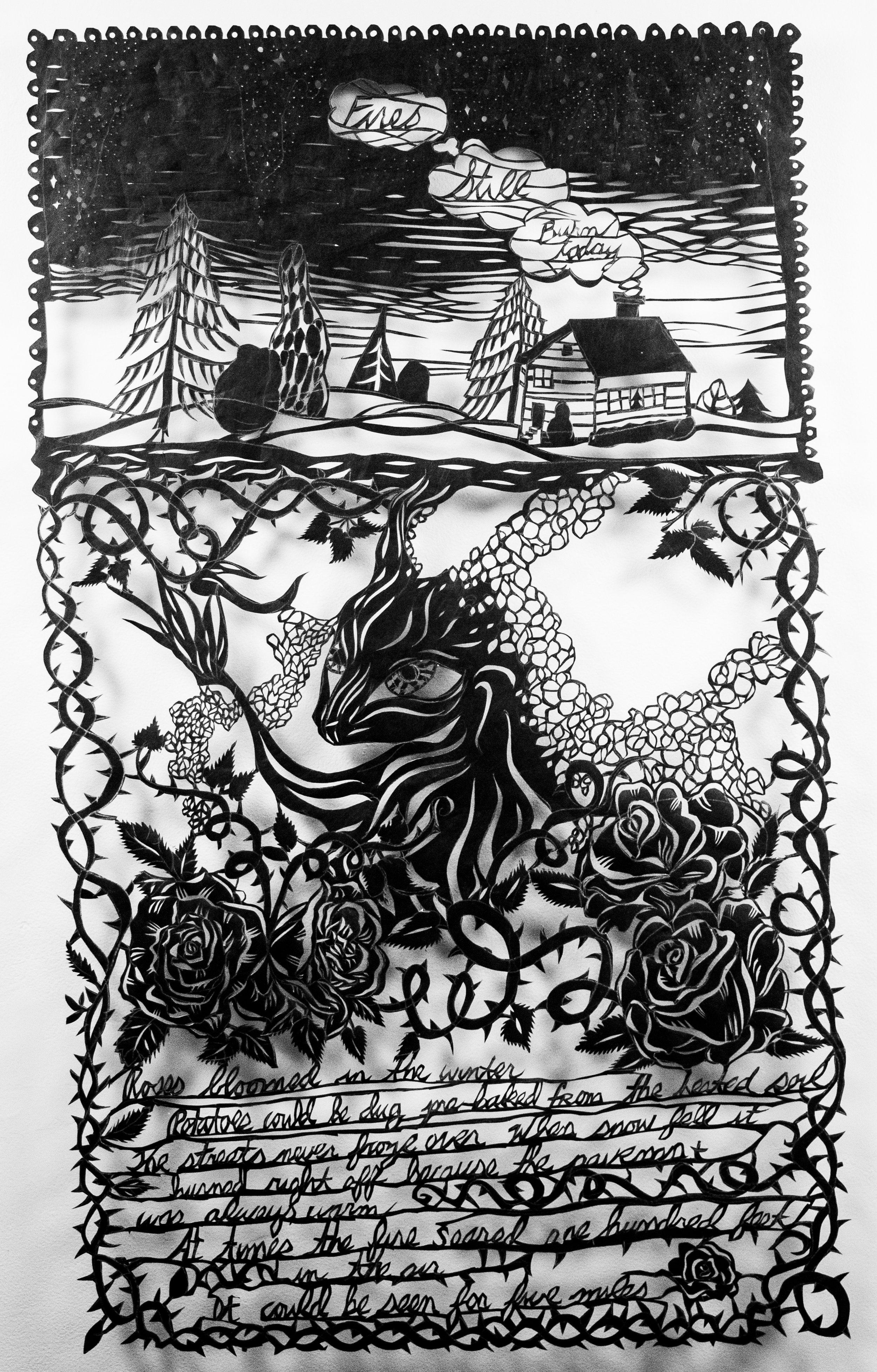








The first cut paper series I made was of the Peruvian folk tale of the Ukuku, The Bear Prince. The tale starts with a young shepherd girl in the Andes. While she is watching her llamas she sees a handsome young man. They begin an innocent flirtation.

The young man tries to lure the shepherdess away with promises of a beautiful and easy life, a life very different than the hard scrabble life of the mountains, where food is scarce and one must labor intensively for everything. “We will live in a castle and you will eat sweet fruit” he promises.

In a rash moment she agrees to abandon her flock and go with him. As they are descending down the steep mountains she has difficulty with traction. He tells her to get on his back, he will carry her. As they continue to descend she discovers he is no longer a young man, his skin has begun to transition into the rough fur of a bear. The castle is indeed the bear’s cave. “You are no prince.” she exclaims “and this is no fine place to live.”

After living together for some time, the young woman discovers she is pregnant. When the child is born, he is human from the waist up but bear from the waist down. At first she is horrified but she learns to love Pablucho.

Although she is somewhat content, she still misses her family. She enlists her son in helping to convince his father to return to the mountaintop so she can see her mother and father again.
Knowing the Ukuku could deny his son nothing, Pablucho asks his father for a gift of a black llama. The father agrees they should return to the mountain so that they can aquire the animal for Pablucho.

When they arrive at her parent’s house, Pablucho’s grandparents are horrified by their half bear grandchild, but even more horrified by the shepherdess’ bear husband. The devise a plan.
They fill a large kettle with boiling water and cover it with their most beautiful weaving, or manta. They invite the bear prince in. “Here,” they say, “Have a seat”
The Ukuku, so happy because he thinks he is accepted into the family, takes a seat on top of the manta and falls into the kettle of boiling water, where he is trapped. Hearing the Ukuku’s howls of pain the Pablucho and his mother run back. “What have you done?” they cried. It was too late to help the Ukuku.

Over time the people in the village come to love Pablucho. He is known for his incredible strength.
In the fable, one day the shepherdess is sitting, thinking about the loss of her husband. She sees Pablucho running towards her. As he runs, he transforms completely into a bear, and continues to run down into the rainforest, never to return. The story ends with the shepherdess mourning “Now I must live without the two I love most in this world.”
Traditional dances featuring the Ukuku are still featured in traditional Andean festivals today.

This was actually a wedding gift that I made for one of my former students. We had just always stayed in touch through social media. She is as enthusiastic about her rabbits as I am about my dogs and I think we just delight in each other’s mania.

The piece reads “Atticus and I go to the dog park every day. He reminds me of my mother because he likes to look at the water, just like she did.”
It’s kind of funny. All of the coastal Peruvians I know like to look at the water. In the landlocked midwest, one of my friends said “I like to look out over the fields and watch them sawying in the wind because it looks like the ocean.”
Which is extremely wishful thinking, in my book.
My mother was the same. She liked to look at the river behind our house. She loved the sight of lake Erie as we drove by it on the highway. In a funny way, my little dog is the same. He becomes impatient in the small dog park and barks, his signal that he wants to venture into the big park. The big park has the stream. He just looks at the water, then looks at me, and smiles his little smile. We have to walk the entire length of the stream. As we leave the park he pulls us down the bike path that leads to Holmes Lake. His little 14 pound body is strong with determination.
The path around Holmes Lake is 3 miles. Atticus is now almost 15 and I find myself carrying him around the lake, but he lets me know when he wants to be put down so he can wade in the water. He is an earthy soul that likes to feel the sand between his toes.

3000 years ago the Gulf of Mexico flooded the Ohio River Valley 55 times. All of the silt turned into a vein of clay that would become a source for Arts and Crafts potteries in Southern Ohio. (Potteries such as Rookwood, Roseville, Hull etc.)
The organic matter later turned into a vein of coal, known as the Kittanning Coal Seam. During the Industrial Revolution, Ohio’s natural resources became increasingly important.
In 1938 the WPA lured hundreds of out of work coal miners to stop the fires. Bore holes were drilled 100 feet deep, clay was pumped in, old shafts were bricked up…It didn’t work.
The bedrock naturally fractured so oxygen got down to the coal seam where there is plenty of fuel to keep the fire going.

As the coal burned away away sink holes were created, swallowing houses, livestock and in one instance a group of children playing. The entire town had to be relocated several miles over.

The fire was set in 1884 by anti union workers. They soaked railroad cars that were loaded with timber with oil, ignited them and rolled them into the mine openings. It was not until several days later that it was discovered. Then they saw that it could not be brought under control and catastrophe was upon them.

Roses bloom in the winter, potatoes could be pulled from the ground pre-baked. The streets never froze over. When it snowed it burned right off because the pavement was always warm. At times the fire soared up 100 feet and could be seen for five miles.
Fires still burn today.

Many cultures have some folk tale about an animal bride. In these tales, she is often witnesses discarding her seal skin, her feathers, her fur to walk the earth as a human. Usually her animal accoutrement is stolen from her so she can remain trapped in human form, often for purposes of marriage. In these stories, she always finds her skin and escapes back into the wild.

Manatees and its companion Stingrays were based on studies i made upon arriving in Key West. I usually focus on endangered, threatened or sometimes invasive species. In this one instance, manatees were removed from the endangered list in 2017. However eagle rays are now threatened. My hope is that the same dramatic turnaround can be made to save this species. an upcoming series on Key Deer is coming soon.

One of the most significant inventions in the history of mankind is the stirrup. The other is the horse shoe. “They have broken fifteen bones in my body. It was my choice though. You can fix a person, it’s really hard to fix a horse. Horse people are hard workers. They are kind, forgiving and they cherish every moment with their animal. Horses are flight animals, they aren’t meant to be brave. Yet we ask them to be war horses, police horses, and they put their trust in you even when they are terrified. It’s a rare person that will do that for you.”

I am jumpy when approached from behind. I’ve been feeling bleak and delicate and I keep finding clots of blood in my hair near the deepest wound.
The rabbit followed me along the path. She sat near me for a long time. “I feel you, sister.” She said. “Big dogs come for my kind all the time. I know what it is to feel fragile, temporary, easily erased. “